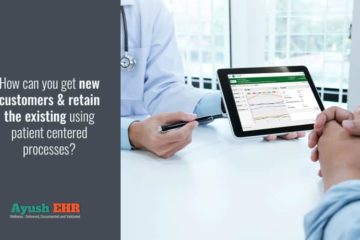How diffusion of innovations theory is beginning to hold true for EHR software adoption in Ayurveda

An innovation always starts with an idea! The spark of an idea is later developed into a clear definition and structured to suit execution. In the case of technology, once the basic idea is developed as a product and reaches a stage where it can be shared with users, it is known as a Minimum Viable Product (MVP). At this juncture early adopters are on boarded to test it and provide market relevant insightful feedback to further develop and mature it. The product maturity process follows cycles of adoption by different classes of users identified in the diffusion of innovation theory.
The diffusion of innovations theory was popularised by Professor Everett Rogers through his book ‘Diffusion of Innovations’ published in 1962. The theory seeks to explain how, why and at what rate new ideas and technologies spread. He classifies the users of any new technology into 5 categories namely; innovators, early adopters, early majority, late majority and laggards.
With the government of India moving at an increasing pace to formulate policies to secure patient data and improve transparency in healthcare, let us see how the innovations in Electronic Health Record(EHR) software for Ayurveda is beginning to follow the diffusion of innovations theory.
- Innovators: They are the risk takers and have an urge for being the pioneers in adopting new technology. Ayurvedic doctors who believe in the need for validation and to bring in acceptance of the 5000 year old alternate medicine into the international community would be the part of this group. Their feedback would be valuable in helping the software for Ayurveda grow and allow the next set of adopters to onboard. The innovators would constitute a mere 2.5% of the market share.
- Early Adopters: They are more discreet than the innovators and makes a judicious choice to help them maintain a central position. They normally tend to be references of innovators (Doctors who use the software initially) and wants to use the EHR in Ayurveda software to help them gain a leverage similar to what the innovators received. With the early adopters starting to use the software, the market share of them would increase to 13.5%.
- Early Majority: These could be the doctors who are well-connected in their community through associations and conferences. When the news about data security and the government policy discussions sweep into these organisations for discussion, they would realise the need and would look forward to use the EHR. Since a vast majority would be a part of this professional body the market share of the early majority would be 34%.
- Late Majority: They would constitute the second largest majority of 34%. Though a little late they would also adopt the software after realising that the government policy is here to stay and the adoption is inevitable. For the group of late majority, they are highly skeptical of innovation and would first try to resist before they begin the use. Despite the initial reluctance to change, once they find value, they would be advocates and discuss the benefits the change has brought about in their medical practice.
- Laggards: Also known as the traditionalists the laggards who would constitute only 16% would either not accept the change or just pretend to be using EHR by exploiting the loopholes in the policy/rule. They would be missing out on the benefits and would lag in the race and end up frustrated as they become isolated in their professional domain.
The spark for AyushEHR came from the frustration of progressive Ayurveda practitioners. They were increasingly getting frustrated in Ayurveda increasingly loosing ground in modern healthcare due to the lack of documentation and body of validated evidence. The time was ripe with the release of Indian EHR standards and discussions around the privacy and security of personal data and the spark was ignited. The innovators among them supported us to move from an idea to MVP in a very short time.
The Early adopters brought in their own challenges. Their vision is to use modern technology to deliver better care and improve outcomes, apart from documentation and evidence creation. Addressing this challenge meant adding new and more functionality to AyushEHR to improve Ayurveda care process and improve operational efficiency.
At the current level of maturity, AyushEHR is preparing itself for the adoption by Early majority of Ayurveda doctors. We are happy to be part of this great technology driven revival of our great heritage and welcome everybody onboard.
The diffusion of innovation theory is held true in all the aspects of technology and it’s our ardent belief that even for Ayurveda and adoption of EHR, the theory will hold true. It’s also our belief that no matter how much technology advances, it should still be easy to use by the stake holders and that’s why we at AyushEHR focuses on building the best software for Ayurveda practitioners.


